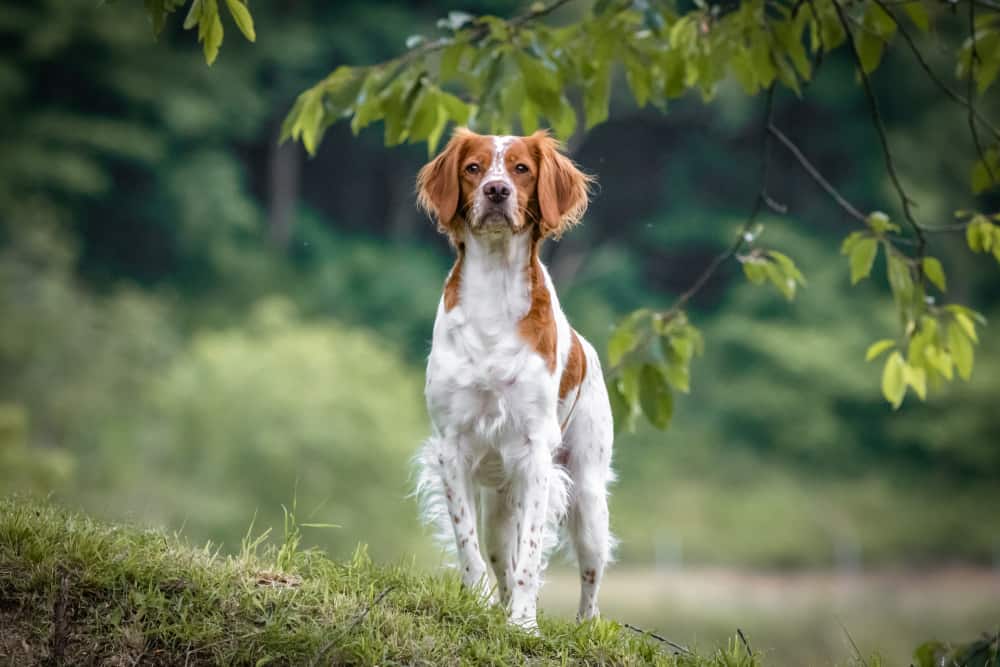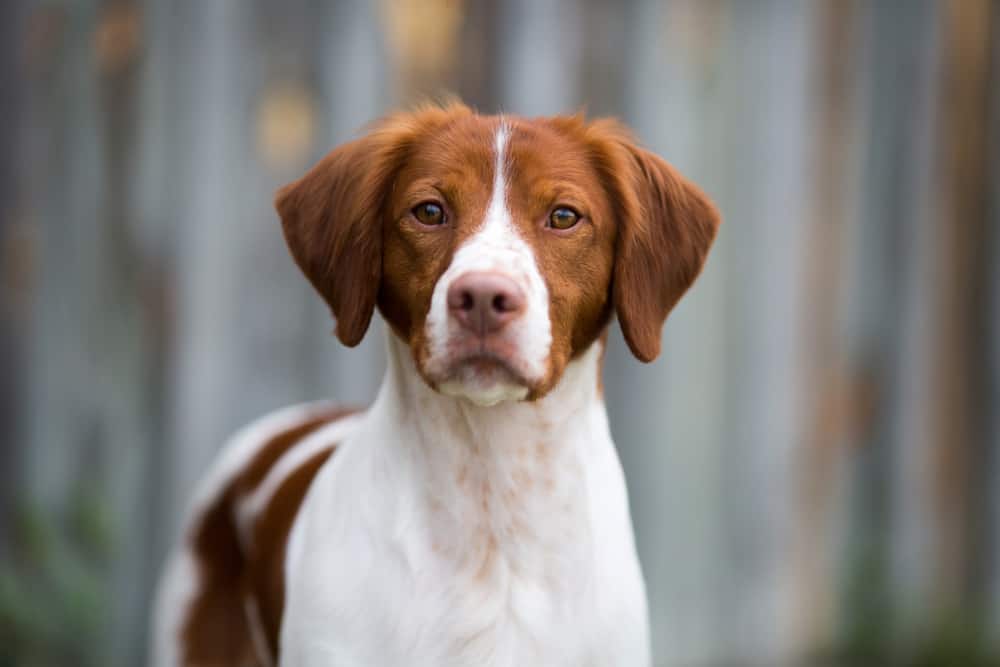Bird Dogs
There are many facets to the world of the gundog, and the Brittany Spaniel is no exception. The effectiveness of any dog in the hunt comes down to both the handler and the dog’s experience. For the most part, the Brittany is considered an “all-rounder” and a pointer that will perform whatever task it is given. They will point out various ground birds like pheasant, woodcock, and grouse, but we want to find out this. Can a Brittany retrieve ducks?
The Brittany can retrieve ducks with no effort because the breed is a proven all-round field dog. This breed holds the most championship dual gundog titles, which includes water work. Being great swimmers, they have strong jaws to keep a good grip on the duck or waterfowl. Their coat will not get soaked and saturated when wet.
With that being said, let us find out how to get your Brittany to retrieve the ducks. Are you a new gundog owner? Have you just decided to add a Brittany to your family, or are you an experienced wing shooter? In this article, we look at specific aspects of the Brittany.
Can A Brittany Retrieve Ducks – Let’s Explore
Is the Brittany genuinely able to be the waterfowl dog you need? When choosing a gun dog for the type of bird species and small game in your area, it will come down to functionality and ability.
The Brittany is typically considered an upland dog in bird bunting circles but can retrieve ducks with ease. Some would call it a tremendous dual-purpose dog. The Brittany is not in the same class as a water retriever like the Labrador or the Chesapeake Bay Retriever; however, there is no doubt that it is a good swimmer for its size.
The Brittany is a healthy, medium-sized dog with good muscle formation, a short tail, and strong enough to bring a duck from the water. It does not have the toe webbing or muscular body of a Labrador, never the less it does not stop the Brittany in its water performance.
How Do You Teach A Brittany To Retrieve Ducks?
Being a generally sensitive and intelligent dog requires minimal correction—positive reinforcement and consistency work best for this breed. Good socialization from a puppy is essential to prevent ashy and unfriendly dogs. They make brilliant family dogs, are loyal companions, and have a steady temperament with a sweet nature. They have a naturally strong hunting instinct that develops very early.
Now let’s look at how you can train your Brittany to retrieve:
Dual Toy Method
The dual toy or toy exchange method is highly effective when used in a controlled environment like a passage or corridor. Doing it this way, you have more control over the movement of the pup.
- Step 1 – Have two identical toys or dummies.
The dog will be more likely to hand over one in exchange for the other.
- Step 2 – Toss one of the toys.
While hiding one toy, proceed to toss the other away from you down the passage or corridor.
- Step 3 – Retrieving the toy.
Encourage your pup to chase after the toy, pick it up and bring it back to you. Use a word that you will be using in the field, for example, “get” or “fetch” every time you do the exercise.
- Step 4 – Present your hand to accept the toy.
Here you hold out your hand to collect the toy from the pup; if he hands it over without much encouragement, vigorously praise him or her, so the association with doing good becomes embedded.
- Step 5 – Present the second toy.
If the pup holds on too long, present the toy you have hidden and jiggle it about to entice the puppy to let go of his. As he lets go, give the cue word “drop it” or “dead,” provide lots of praise, and throw the second toy. Encourage the pup to chase it and repeat.
Helpful Tip – As the pup gets older, you can wrap a duck wing with feathers around the dummy for more authenticity in your training. Fifteen minutes a day to start is sufficient.
How To Get Your Brittany Used To Water Retrieving.
Having a successful hunt depends on a confident dog. Duck retrieving will more often than not include water and lots of it. Let’s look at how to train your Brittany for the plunge;
- Step 1 – Getting used to the water.
Contrary to what we might assume, not all dogs love water. Start slowly by walking through puddles and praising the pup as you go. Gradually progress to a small stream or in the swimming pool.
- Step 2 – Wait for good weather.
For dogs like the Brittany that do not have an undercoat, starting water training when it is nice and warm will boost the young dog’s confidence. Allow for some free-swimming but never too far from the shore.
- Step 3 – Stand in the water.
With this step, you present the toy or dummy the pup is used to training with while you stand in the shallow water. Leaving your puppy on the shore, you call him to come to you and collect the toy. Toss the toy or dummy and use the cue word you have trained. Encourage the pup to bring the toy back and deliver it to hand—lots of praise.
- Step 4 – Check the surroundings.
Ensure there are no branches or sharp objects your pup can get hurt on in the water before sending him in.
- Step 5 – Be patient.
Water readiness in your Brittany will require patience, lots of encouragement, and praise. Always reward your puppy with a treat after each successful attempt.

Keeping Your Brittany Warm In Winter When Retrieving Duck
In areas that are typically colder in winter with low water temperatures, neoprene jackets are a great way to assist your Brittany in keeping their confidence when entering the water.
As this is a breed with no thick undercoat designed for long periods of water-based retrieving, like a Labrador, the neoprene jacket also helps keep the dog’s body temperature stable.
Below we will discuss the Brittany’s abilities as a waterfowl dog in more detail, looking at how it would fare against other pointing and retrieving breeds typically used for long duck hunting days. You can find out more about a suitable neoprene jacket for your dog here and great deals on jackets here.
“I haven’t had firsthand experience, but I do know of a guy down here that has a Brit as his primary duck dog (he doesn’t bird hunt at all) he retrieves 300 to 400 ducks a year on Kentucky Lake, they put a vest on him, and he seems good to go, I don’t know how they limit him cold wise or if they have a heater, etc., but that dog is the real deal.” RICK HALL
How Does The Brittany Compare Against Other Duck Retrievers?
If you have ever had the pleasure to go wing shooting or waterfowling with a single well-trained gundog or a pack of mixed-function dogs will know this one burning question, which dog is the best in the water?
Those fortunate enough to encounter a Brittany or even luckier by owning one will know that there is no limit to the dog where confidence is concerned. There are reports of Brittany’s that retrieve upwards of 250 ducks in a season.
There is no doubt that a Brittany is not always the first choice for waterfowling; it is, however, an exceptional all-round dog. The Brittany will not hesitate to retrieve a duck from the middle of a pond or bolt across a stream to get to a pheasant and retrieve it back to your feet. Let’s rank the Brittany to its peers below;
The 10 Best Upland Dogs
- Labrador Retriever
- Golden Retriever
- English Pointer
- Brittany
- Springer Spaniel
- Boykin Spaniel
- Irish Setter
- German Shorthair Pointer
- Curly-Coated Retriever
- Cocker Spaniel
The 10 Best Waterfowl Dogs
- Labrador Retriever
- Chesapeake Bay Retriever
- German Shorthair Pointer
- American Water Spaniel
- Boykin Spaniel
- Curly-Coated Retriever
- Brittany
- Irish Water Spaniel
- Standard Poodle
- Nova Scotia Duck-Trolling Retrievers
Conclusion
The Brittany has become one of the premier choices for wildfowlers in general, and although it can do any task it is given, it requires a soft and knowledgeable hand where training is concerned. As one of the more forgiving gundogs, it will be one of the best all-round runners and pointers in the field, whether upland or in the water.
